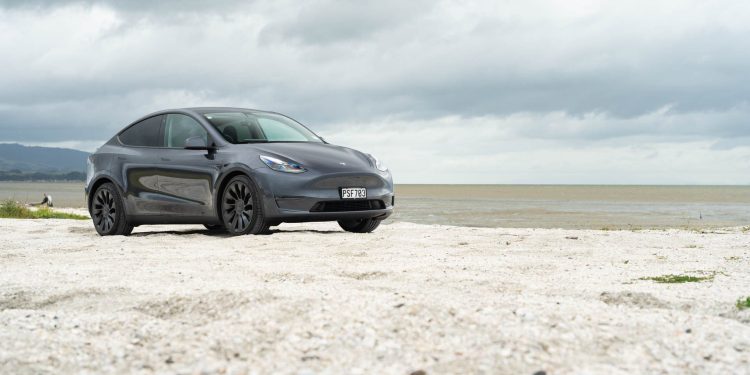2023 Tesla Model Y Performance review
Words: Peter Louisson | Photos: Isaac Western
There are two examples of Tesla Model Y, the mild and the wild. The former is more affordable, the latter adds pace to practicality.
Tesla’s base Model Y featured towards the end of last year in NZ Autocar, and now it’s the turn of the fire-breathing Performance edition. Hmm, electrifying is perhaps closer to the mark. Those wanting more of what the Model 3 offers should consider this, though it comes at a price. Still, there’s 336kW and 639Nm of dual motor output on tap, almost halving the sprint time.
Along with performance there’s also decent range, the 78kWh battery pack offering potentially 517km of motoring.
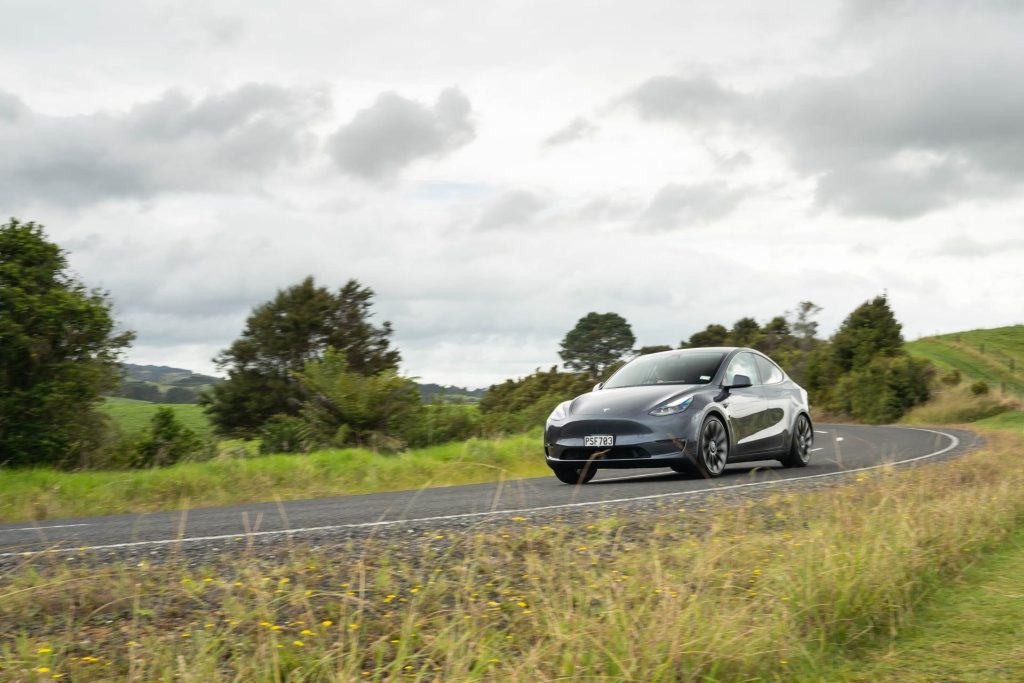
Would this be one of the few EVs to make it around our long evaluation drive loop without needing a refuel en route? We were thinking we’d have to go easy in ‘Chill’ mode because there are no chargers available down around that way. Which turned out to be wrong because perusing the Plugshare app showed there is a Tesla Supercharger in Clevedon at the Hallertau Brewery. Who knew?
Fast or what?
Anyway, long story short, the vehicle you see here managed the long loop with virtually half a charge in hand. Clearly its coupe shape and low claimed Cd of 0.23 contribute to range. By the by, the long route included not only the drive itself, most of it on highways and byways, but also performance testing for a total of around 250km.
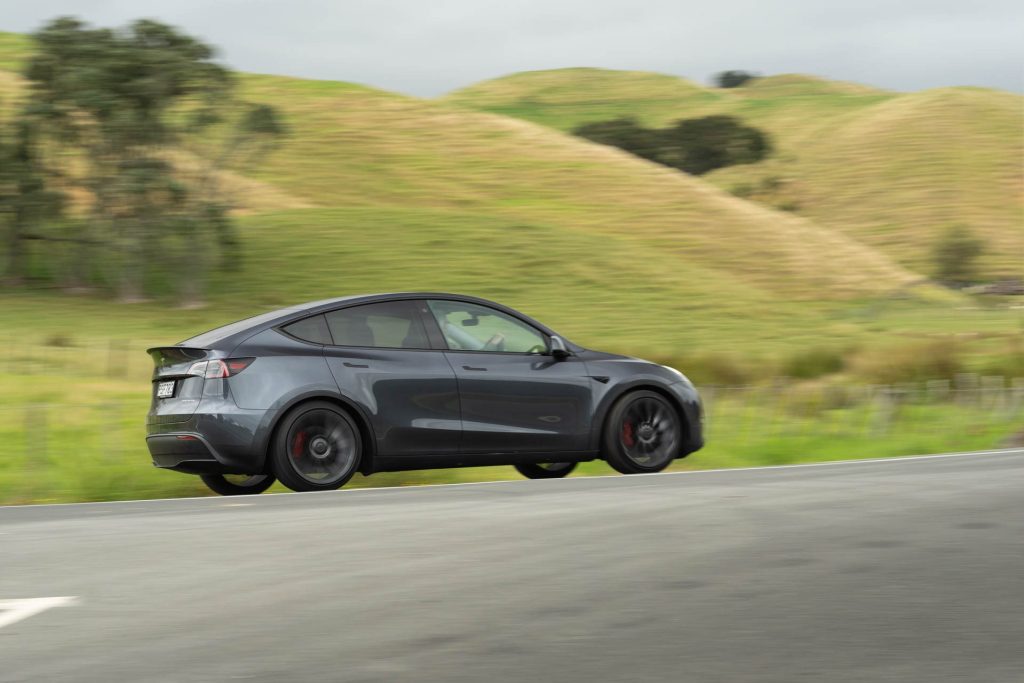
For those wondering about the outcome of those tests, the sprint number came in at 3.88sec, a couple of tenths down on the company’s 3.7sec claim, so it’s almost as quick as the equivalent Model 3 racehorse. Both of these performance variants can get up and boogie, and in Sport the acceleration is roughly twice as quick as in Chill mode (7.7sec 0-100). The standard Model Y evidently requires 6.9sec for the discipline.
An overtake in the biggest and baddest Model Y requires just a tick over 2sec, again a blazing figure for a car that costs $107,987 including ORCs. Our particular model featured $1700 of metallic paint, and so leaves the showroom at $109,687. An emergency charger adds another $600.
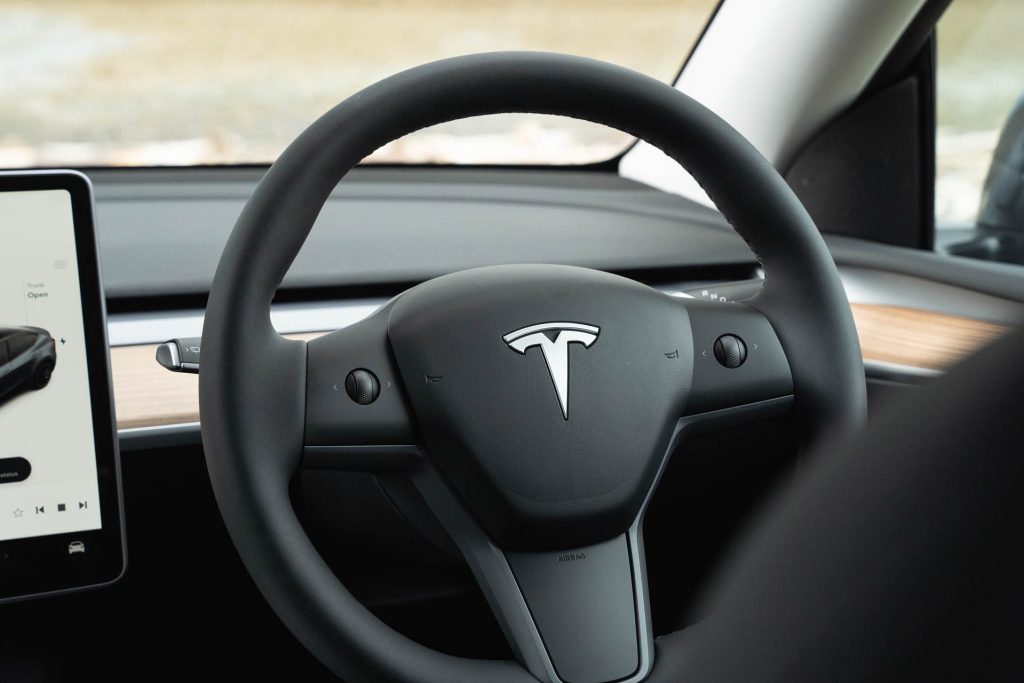
To get this sort of acceleration in a petrol-powered machine, you’d need something like an AMG GLC 63 which will set you back the better part of $185k. All of this is done without any sense of drama in the Tesla. There’s minimal humming or whirring and road noise from the Pirelli PZeros is almost non-existent; only two of our myriad SPL readings broke 70dB, and the average was 69.4, over our reference noisy roads.
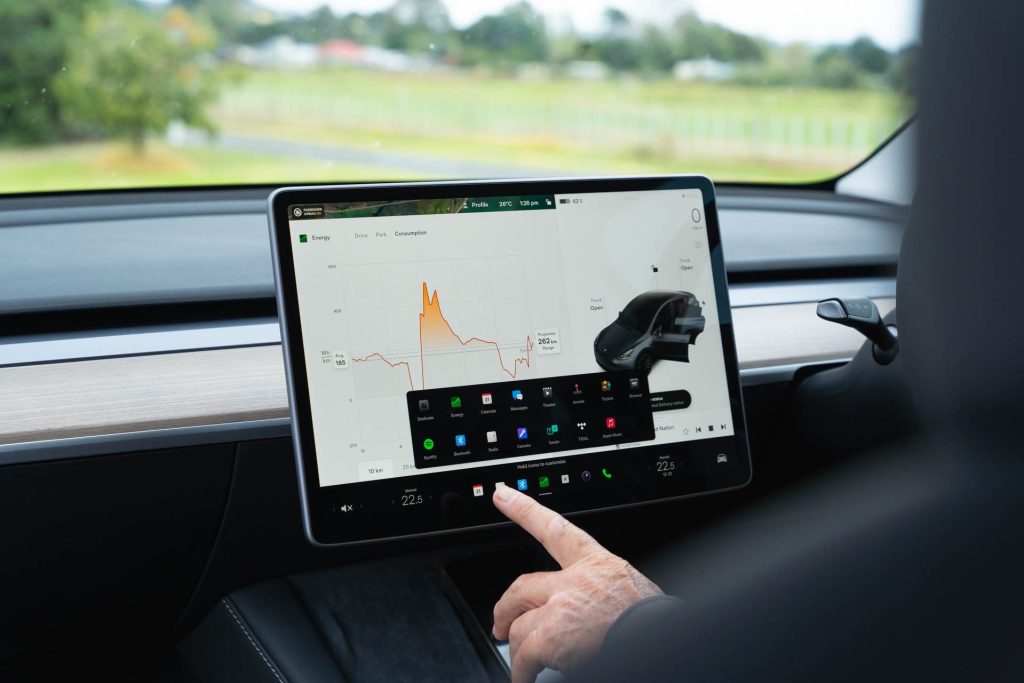
I went looking for the sound system and when the radio erupted at high volume I just about steered off the road. What a set-up though, evidently developed by B&O engineers, with 13 speakers and 600 odd watts. Clarity is first rate, given the lack of corrupting external noise.
Viva la difference?
Guess we should address the stuff that people like to either whinge about or single out as sheer brilliance in Tesla product. And that’s the fact that almost everything in the car is controlled by the 15-inch touchscreen. Things that aren’t? Opening and closing, which is done by key card or by your cell phone that you can easily set up as a second key.
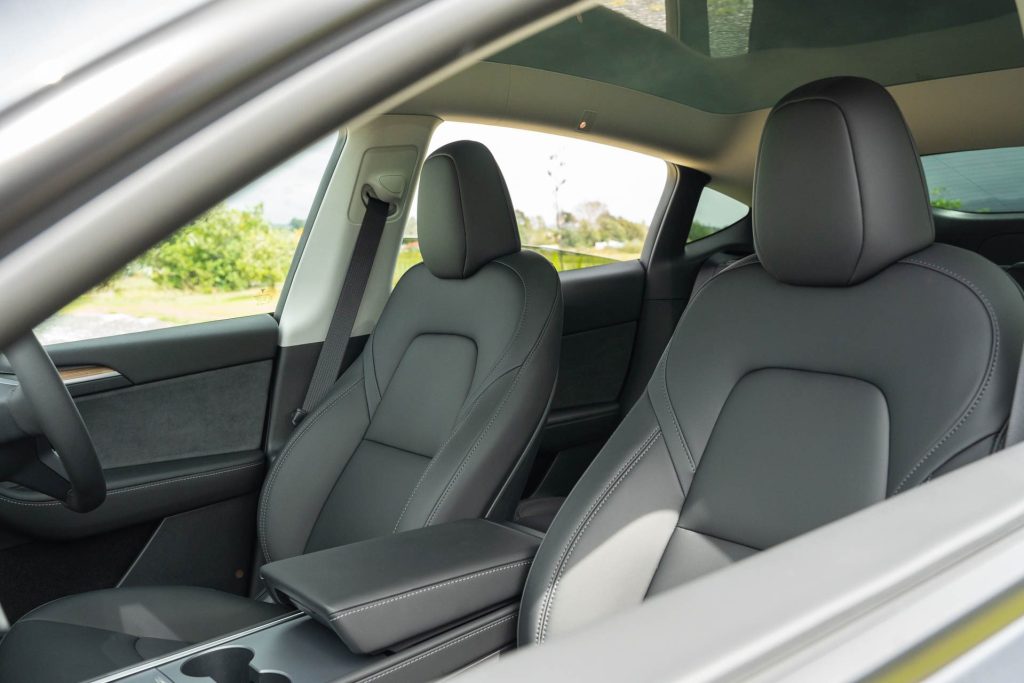
Driver and passenger seat fore and aft movement is power operated, as is driver lumbar support, adjusted by levers and a button on the side of the seat; a pretty decent pew it is too, finished in vegan leather.
Taller folk might find it a bit short in the squab length but overall comfort is great. Selection of gears is done by a wand on the right side of the steering column. That also instigates adaptive cruise which is then modulated by a rotary click wheel on the right side of the circular leather-bound steering wheel.
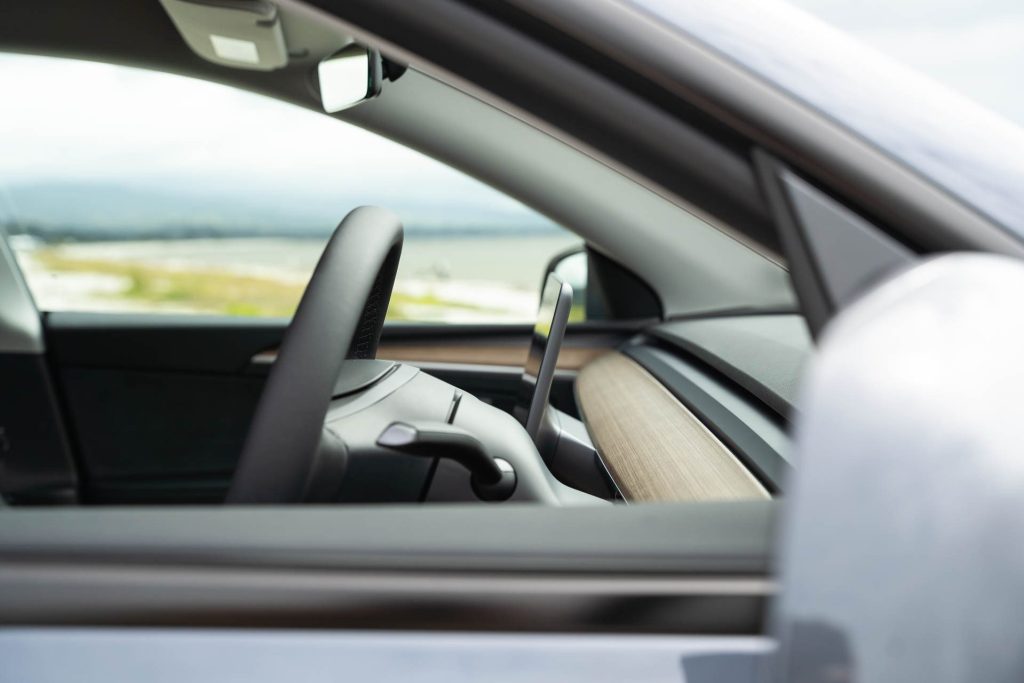
And that’s literally it; the rest is done in the landscape-oriented central touch screen, e.g. ventilation, seat heating, even mirror adjustment. Its right upper edge is dominated by a digital speed readout, traffic sign recognition and blind spot monitoring showing pictorially what’s happening around you. Rearward visibility isn’t great but myriad cameras compensate for that.
Hit the left sided indicator (which has three-second and long activation modes, both somewhat lacking in positivity) and a camera activates to show what’s coming up behind you on that side. There’s no head-up display because Musk is agin them.
Ostensibly it’s because autonomous drive doesn’t require that info to be displayed; realistically it’s because there’s greater profit without it. Ditto with no driver instruments up front.
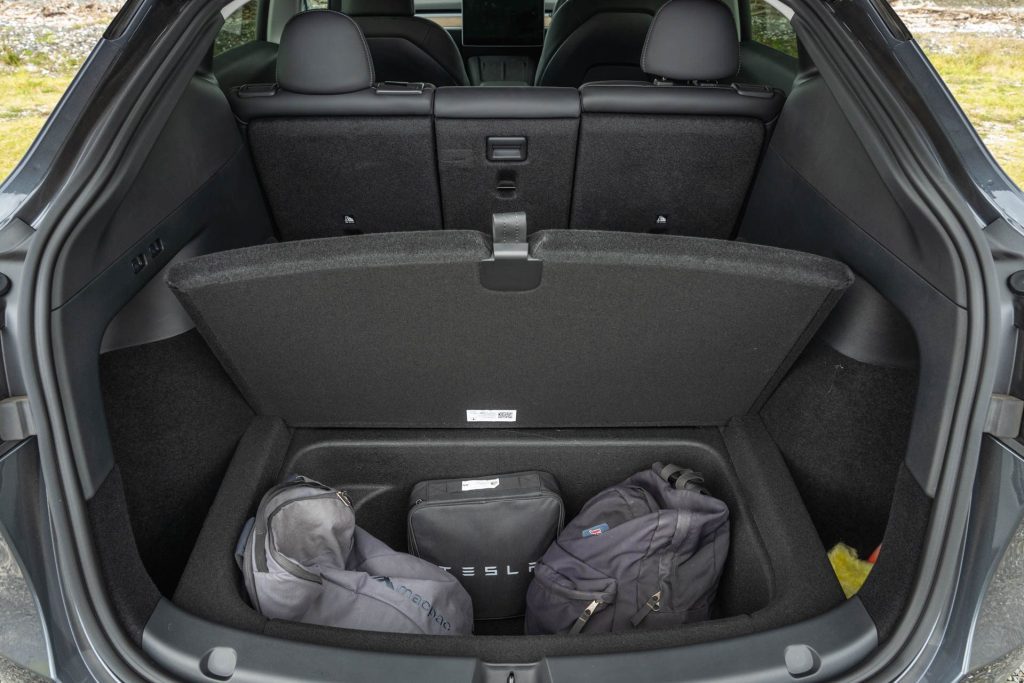
No expensive key, and no pushbutton starter either. And there’s the advantage of huge body pressings, rather than numerous small items that need welding.
As a result, Tesla evidently makes about 30 per cent profit on each vehicle, against the industry average of around 10 per cent. Yet you don’t miss out on specification; all seats are heated, for example.
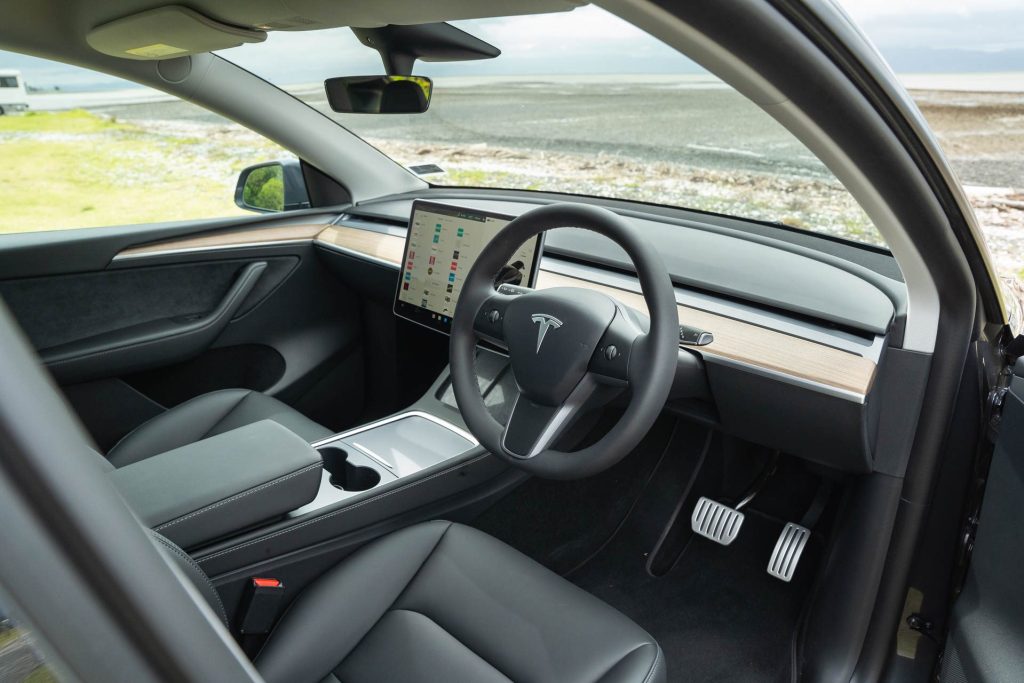
It’s really rather easy to be distracted in the Model Y by the screen – you use it for monitoring speed, after all – but with familiarisation you’ll tend to leave the screen on energy use/distance to empty and glances to check speed are simply that.
So how about range?
The Dual Motor Performance model is said to have over 500km of WLTP range thanks to its 75kWh battery pack but, this being a tester, ours kicked off full with 380km showing. If you’re driving it mainly in town, we’d expect distance to empty to creep up rather quickly after each recharge.
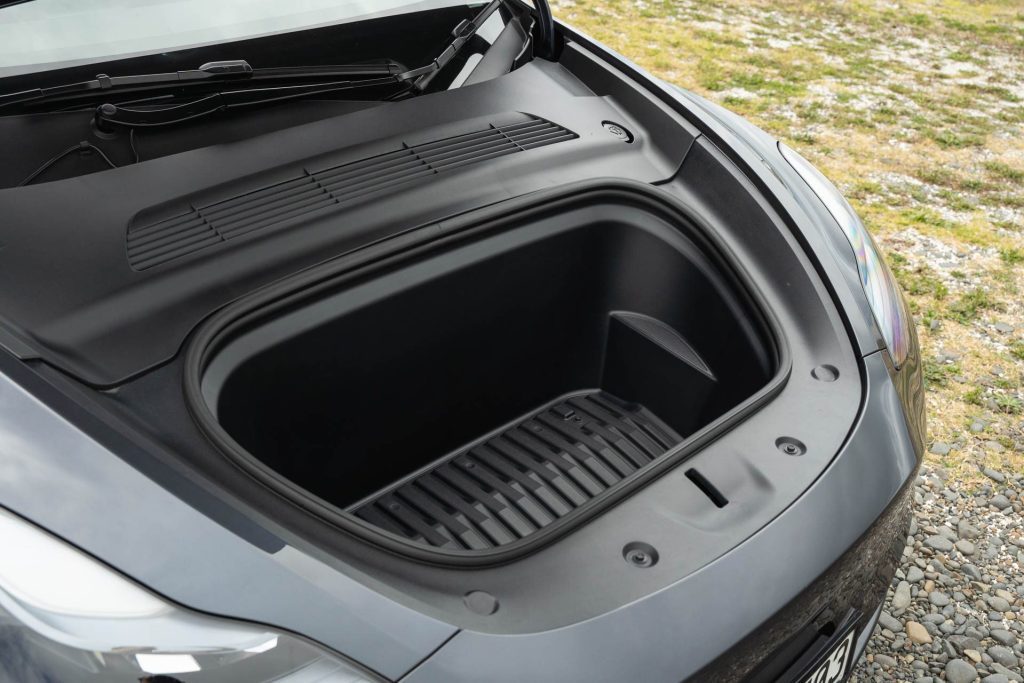
Anyhow, we decided to take things easy in Chill mode. Trying to stick to 80km/h isn’t easy, despite there being no coasting mode per se; regeneration is set and forget, allowing for an excellent one-pedal driving mode. It works well; back off just before corner entry and it slows appropriately.
Should you need them and you won’t much, the brakes are reassuringly strong, aided by PZero rubber, producing repeated panic stops from 100 in the 33-34m area. That’s impressive for something weighing in at two tonnes.
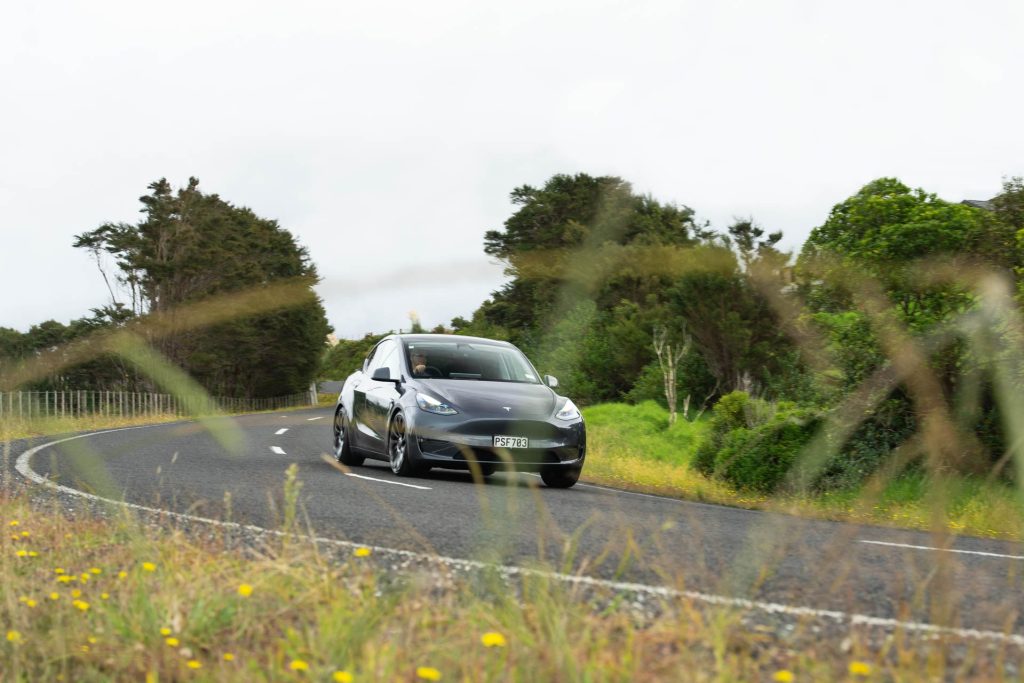
Given it only used half a battery around the long drive loop on day one, the next day after a recharge, we did the photo shoot over the same track and drove it as any (red-blooded) owner might. No performance figures then but plenty of back and forthing for the camera shots, which is murder for efficiency. We still made it back with 35 per cent of battery charge remaining.
There’s more good news on that side of things too; Tesla has its own recharging network. These are dotted throughout New Zealand, meaning Teslas can essentially circumnavigate the country and always be within striking distance of a supercharger outlet.
After our first day out, we took our tester to the main charge station beneath the Tesla store in Auckland, and hooked it up to the cooker which took about 15min to rejuice it from 40 to 80 per cent.
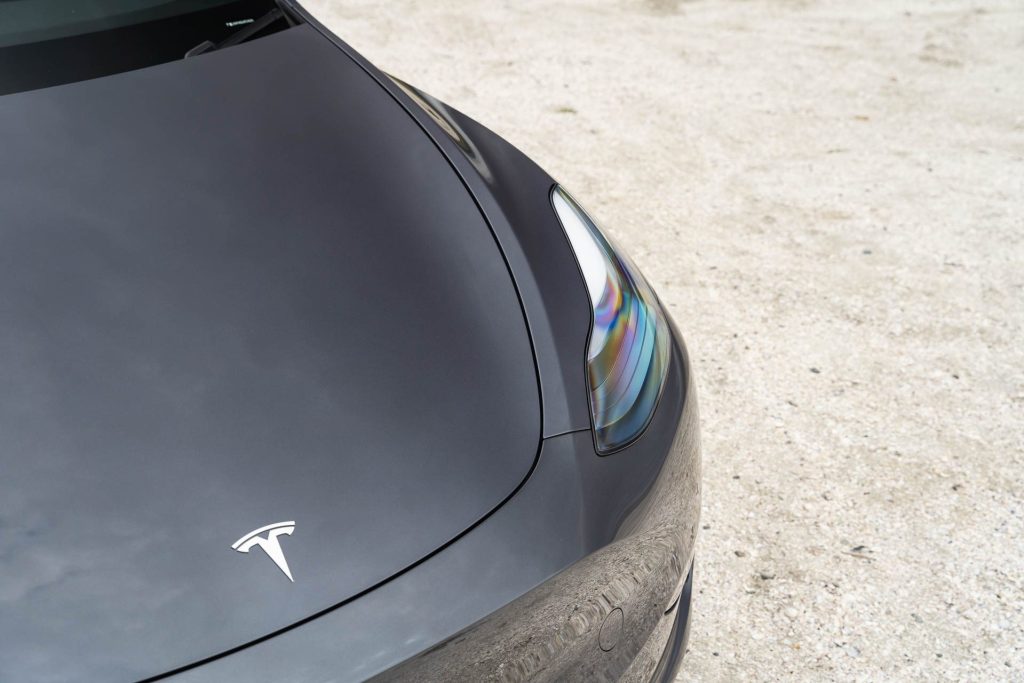
While waiting you can delve into the screen again (it’s always connected) and check the news feed, or watch Netflix if you want, play games or check out the virtual DJ Trax app. The charger reported it was feeding the preconditioned battery at the rate of 330km/hour. A full recharge would have added another 15min or so because the charge rate from 80 to 100 per cent slows dramatically to preserve battery life.
Secure on road
Nor is the handling to be sneezed at. This is a little different from the base model, featuring lowered suspension and 21-inch ‘Uberturbine’ wheels wrapped in 255 and 275/35R21 PZeros. Be careful when parking as those rims look vulnerable and expensive.
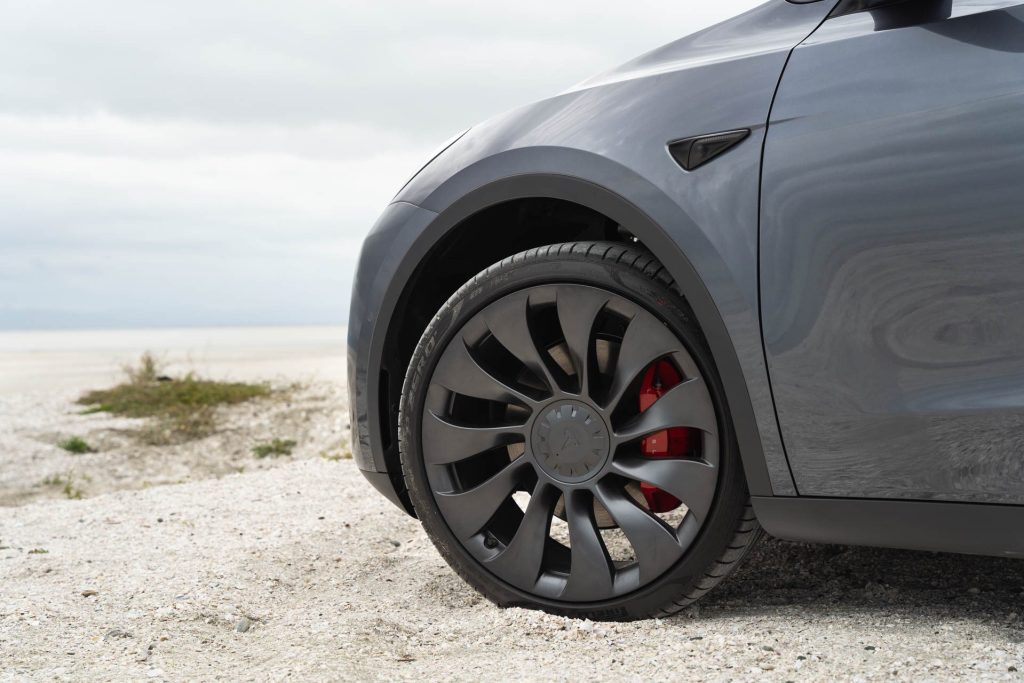
Suspension is fixed and really well sorted for a mix of town and rural use, the ride never fidgety, the body control just so for a vehicle that is designed to be both practical and sporty. It rides only 38mm higher than the Model 3 on which it is based.
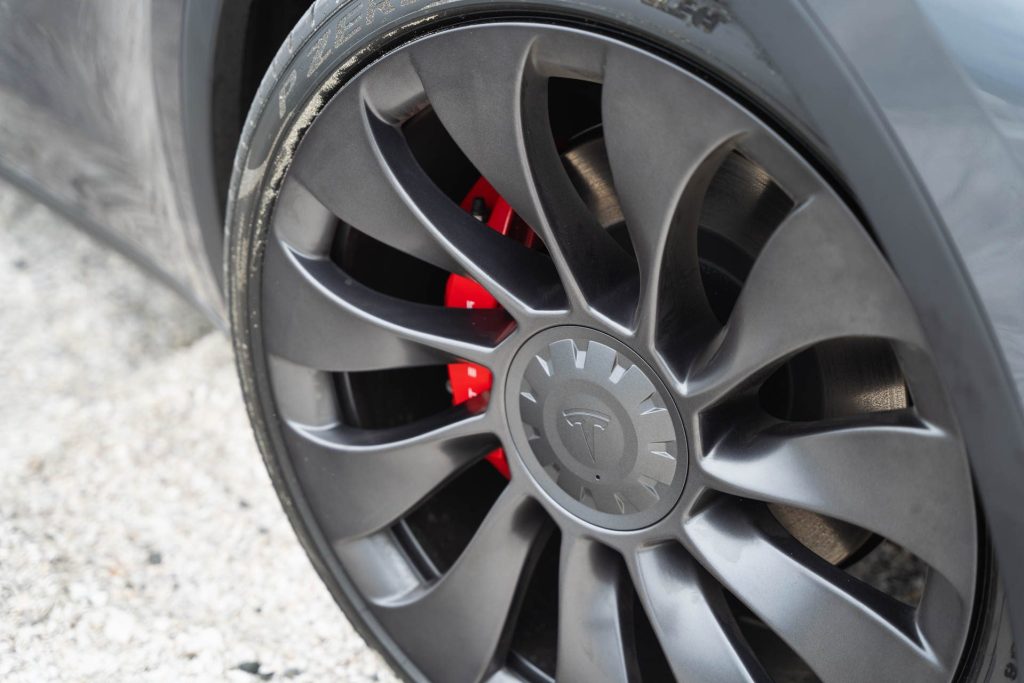
We were more than pleasantly surprised at how well this went over our drive loop, with stellar grip from the AWD set-up, aided by swags of great PZero rubber. Part of the reason you hardly hear road roar is that the vehicle features acoustic glass, double glazing if you like.
Helping with dynamics is genuinely quick steering, with two turns from one extreme to the other. Not that its turning circle is wonderful at 12.1m.
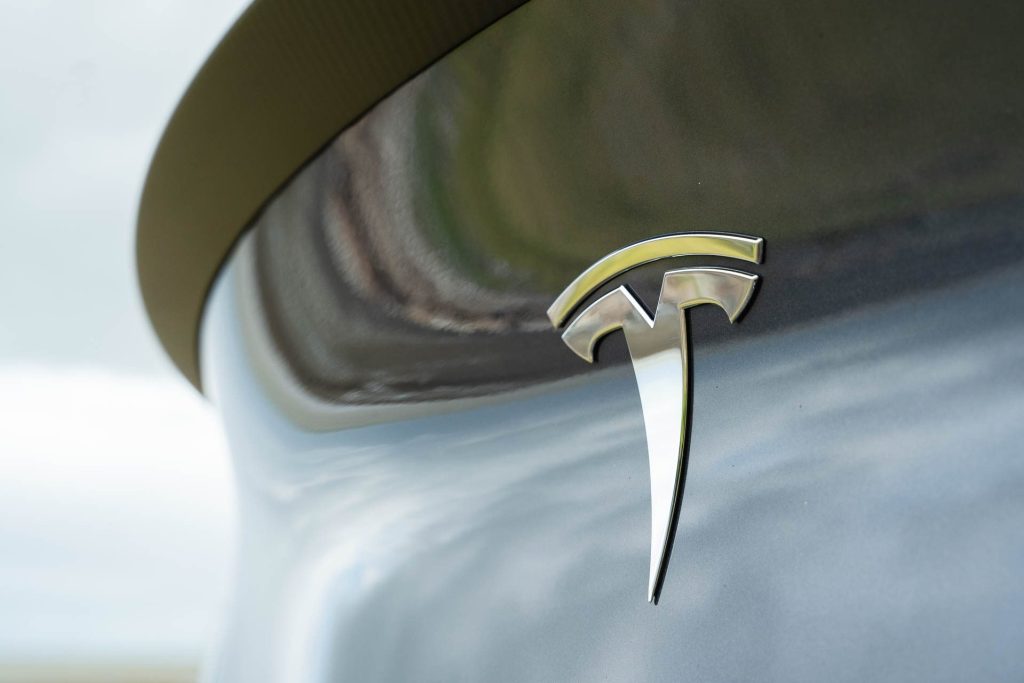
How’s it inside?
This is nicely built with no buzzing or rattles to be heard, even if some of the vehicle has hard plastics in plain sight, like on the doors. Without buttons it seems spartan inside and yet all the safety gear is there. It received a five-star safety rating from ANCAP, with strong scores across all four assessment areas.
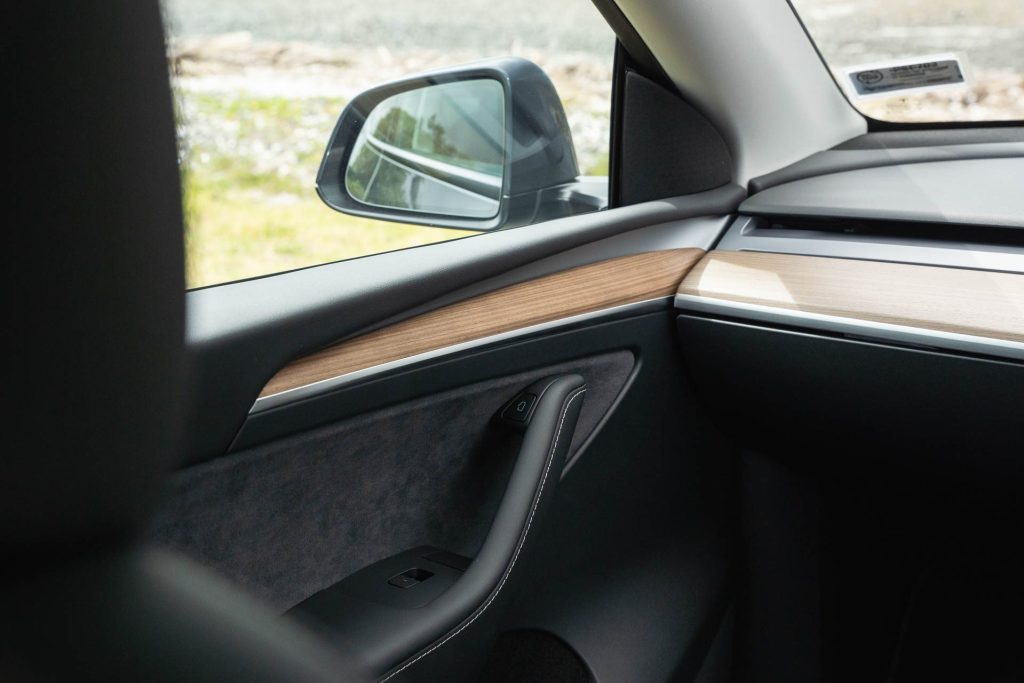
Atop all of this, practicality is amazing. Not only is the boot enormous at 854L but there’s a 100L hidey hole beneath that swallowed two day packs plus emergency charger, and a 117L frunk that’s also pretty useful.
For similar money there’s dual motor examples of Kia’s EV6 and Polestar’s 2, both great vehicles, neither as quick but arguably better looking. However, this gets the space and market darling prize. The smart money is on the base Model Y, on account of its $77k on road price, qualifying it for a $8625 rebate.
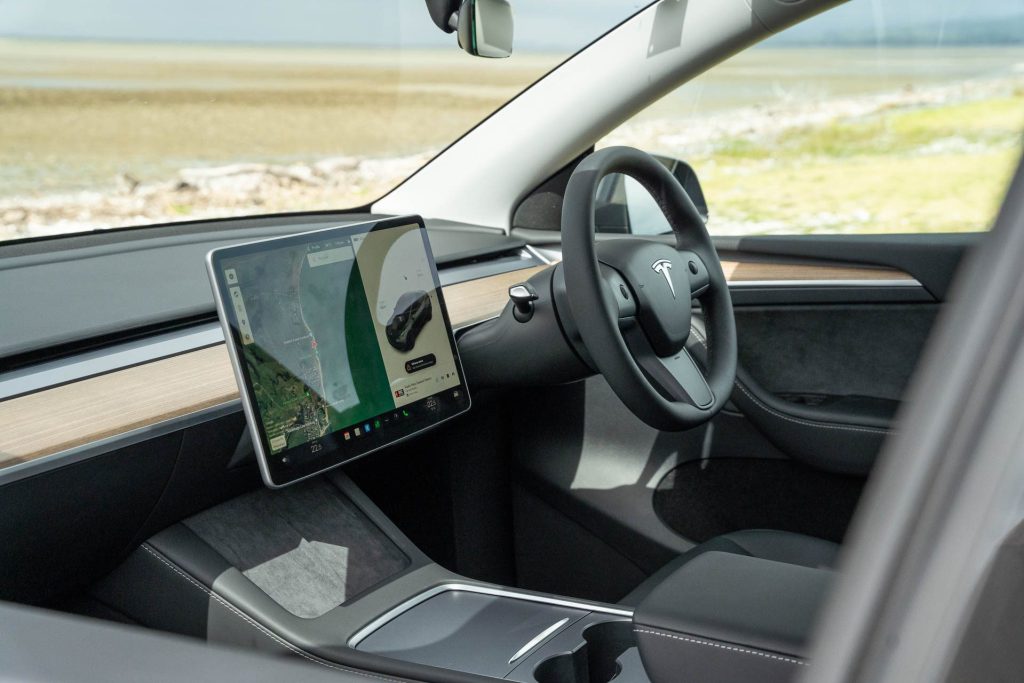
That’s a lot of EV with good range and performance for the outlay. Small wonder it’s selling well.
Tesla has moved over 4500 units, so clearly people like the look, the tech and what it offers them on a practical basis – generous room for five and their gear, and decent range. A long range AWD model is expected to be added to the Model Y line-up in H2 of this year. Availability of the seven-seater is unclear.
| Model | Tesla Model Y Performance |
| Price | $107,987 |
| Clean Car Discount | Neutral – $0 |
| Motor Output | 336kW/639Nm |
| Battery | 75kWh |
| Range | 517km |
| Drivetrain | Single-speed auto / AWD |
| Energy Use | 17.1kWh/100km |
| C02 Output | 0g/km |
| 0-100km/h | 3.86 sec |
| 80-120km/h | 2.12 sec (61.59m) |
| 100-0km/h | 33.44m |
| Stability systems | ABS, ESP, TV |
| Safety | AEB, ACC, BSM, LDW, RCTA, ALK, AHB |
| Luggage capacity | f-117L, r-854-2041L |
| Tow rating | 750kg (1600kg braked) |
| Service intervals | 12 months, 20,000km |
| Warranty | 4yrs, 80,000km |
| ANCAP rating | 5 Stars (2022) |
| Weight | 1995kg |


